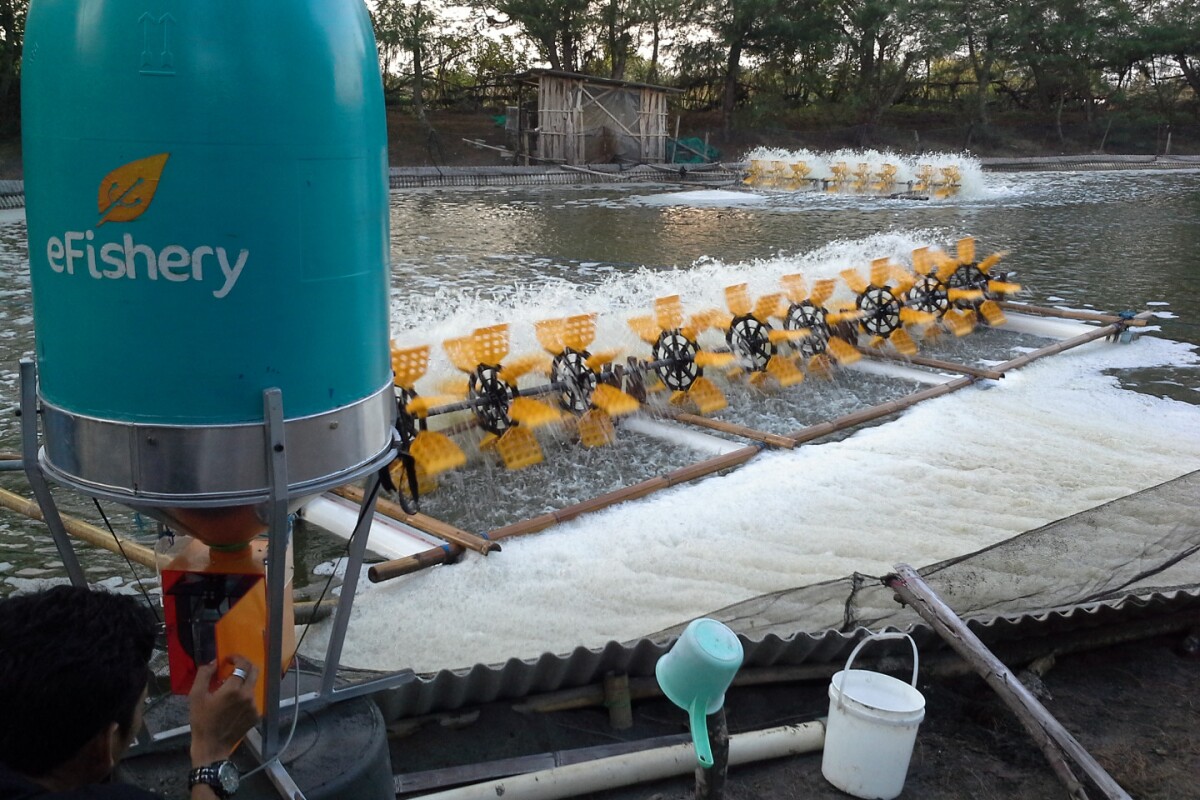Fish farming seems like a great idea on paper. But a host of environmental problems can plague coastal fisheries, most due to the large amounts of waste generated by these floating factory farms. eFishery, a company based in Indonesia and run with the involvement of TED Prize director Amy Novogratz, hopes to alleviate waste problems that result from both over and underfeeding of fish with the development of a smart feeding device that bases the amount of feed dispensed on fish behaviour.
Fish feeding typically accounts for 50 to 80 percent of a fish farm’s overhead costs, but since feeding is a manual task, its mostly an unmeasured and inexact method with one of two outcomes. Overfeeding means much of the feed goes to waste, hurting the bottom line of the business, the marine environment surrounding the farm, and the health of the fish. On the flip side, underfeeding leads to the die off of fish.
eFishery’s automatic smart feeder is designed to address these issues and dispense just the right amount of feed by using sensors that measure fish appetite. Designed for large- and small-scale farmers, the system picks up on hungry fish behavior through an in-water, vibration-based sensor that can read the movement of a hungry versus a full fish.
After deducing the relative hunger of the fish, the top-loaded machine releases a customized amount of feed at pre-set times and sends a real-time activity report directly to the farmer’s smartphone. On average, eFishery says its smart feeding system reduces the amount of feed used by 21 percent, while the false positive rate (detecting a hungry fish when it's not) is currently less than 4 percent and is usually caused by weather changes.
"The problem that we are solving is the inefficiency of feeding in the fish farming business," says eFishery co-founder and CEO Gibran Chuzaefah Amsi El Farizy. "I saw the problem when I was a fish farmer myself. Fish feeding is done inefficiently by laborers, and farmers don’t have any technology to control the feeding yet. We built this product to make the fish and shrimp farming business more efficient, convenient, and accountable."
Fish farming is big in Asia, and especially Indonesia, which is one of the biggest seafood producers in the world with 9.45 million tons (8.6 million tonnes) of farmed seafood produced in 2012. El Farizy says he doesn’t have exact numbers on waste for all areas of the country, "but on Lake Toba [in Indonesia], the waste from aquaculture, including uneaten feed and antibiotics, is the biggest (cause), which is more than 60 percent of all pollutants," he says.
Feed waste is reduced with eFishery’s "sophisticated algorithm-based feeding program," says El Farizy, while the need for antibiotics is reduced by simply having a healthier system. "Because the feed waste can be reduced, the water quality will be maintained, so the fish’s daily growth is increased and the mortality rate is decreased," he says, "leading some farmers to reduce the antibiotic use."
The feeder dispenses pellet feed and can currently be used for carp, catfish, tilapia, snapper, and vannamei shrimp. But because different fish types exhibit different behavior, more research and data will have to be gathered before the eFishery can be expanded to work with other fish. eFishery is also one of Indonesia’s first IoT startups to receive venture capital investment funds.
A promotional video from the company outlining the device can be viewed below.
Source: eFishery










